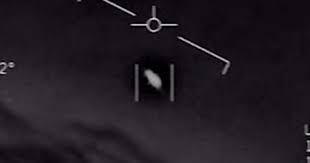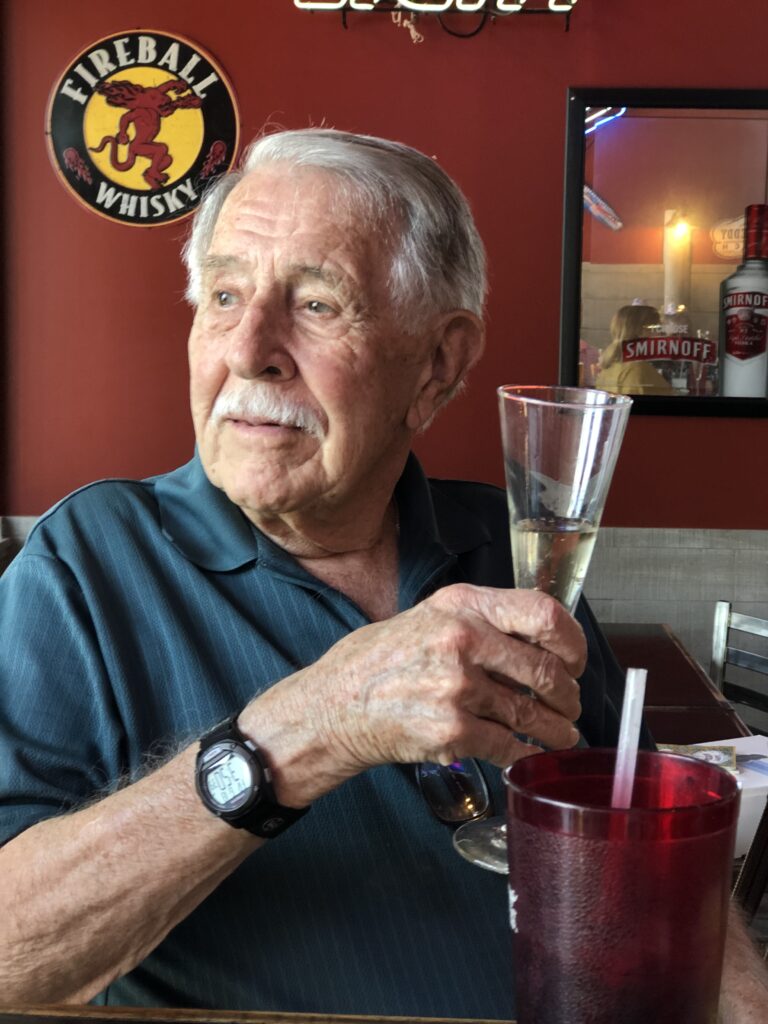
UFO – Or No
If you’re around the flying game long enough, the sometimes uncomfortable subject of Unidentified Flying Objects (UFOs) is going to be part of the conversation. Not that every pilot has actually seen one, but almost everyone has had had some kind of UFO experience, be it first-hand, vicarious, or just something overheard in the stag bar. I’ve had a couple of these “encounters of the second kind”, and I offer them here to add to the growing trove of experiences reported by aircrew members and other observers.
I
The first one dates to 1958. I was a recent graduate of Officer Candidate School, and had been assigned to a mountaintop radar site in Southern Japan as a Radar Intercept Director. After about a year of chasing bogeys around the scope, I was upgraded to crew director. My duties included controlling all-weather F-86D jet fighters on practice airborne intercept missions, and coordinating with various radar sites up the chain of Japanese islands to act as long-range warning outposts and guard American-controlled airspace against potential threats from Russian bomber attacks originating at their mainland bases. It is worth noting that we were still literally at war with North Korea, as the earlier cessation of hostilities has never matured into a formal peace treaty. This “Cold War” was to endure for another thirty years, and this was our small part in keeping the nuclear menace at bay.
One night, as my crew and I were manning our scopes on a routine midnight shift, I received a call from the senior director at a sister site on Northern Hokkaido Island. His long range radar had picked up an object coming in from the far north at an amazing rate of speed, 2,000 knots, and at the extremely high altitude of 70,000 feet. He had reported this phenomenon before, but the object had always disappeared before it entered Japanese airspace.
But this time it was different. The object continued to blast southward, and its projected track would have it flying very close to our site in less than a half hour. My automatic response was to “scramble” (order immediate takeoff) for a flight of two F-86s that were always on five-minute alert at Itazuke Air Base. In short order the flight was airborne and checking in on the UHF radio. “Newgate (our call sign) this is Pushball Red (their call sign) airborne and famiahed” (ready for directions).“ “Roger Pushball Red. Climb gate to Angels 40, heading 360.” I had directed them to climb to 40,000 feet in full afterburner on a northerly heading.
We had about twenty minutes until intercepting the bogey, which had now descended to 50,000 feet while maintaining its 2,000 knots of airspeed. There would be no time to offset our
fighters so as to approach the bogey from the desired 90 degree “beam” position. The best I could hope for was a head-on attach, if we could get the fighters to that altitude.
In the meantime, my assistant director was on the phone to 5th Air Force Headquarters, frantically attempting to get the attention of a senior officer in the command center, inform him of the urgency of the situation, and obtain permission to fire our weapons (24 “Genie” folding fin rockets per aircraft) at the unknown intruder. Now the situation began to get really tense, and I was about to get my first lesson in command-level incompetence. For as my fighters climbed through 40,000 feet on a collision course with the bogey, the lead pilot radioed “I have a Judy, request permission to go hot.” He had told me that he had a radar lock-on to the bogey, and was asking my permission to shoot it down.
That permission was never forthcoming from Command Headquarters. My final transmission from the fighters was this: “Newgate, we’re ready to engage, and I’m standing on my tail. I have to fire my weapons before I fall out of the sky.” I replied, “Go safe, Pushball Red. We have no authorization to engage, so take all the pictures you can and we’ll debrief after you’ve returned to home plate.” With that, my fighters disengaged as they stalled out at 50,000 feet. Being the fine airmen they were, they were able to recover, “air start” their engines, and land safely at Itazuke AB. The bogey soon disappeared from our radar screens, as it continued heading south at around Mach 3. Strangely enough, the nighttime incursions soon stopped
What I know is that our fighters engaged “something” up there. We never really believed that it was the Russians, as they were still generally in the subsonic era of flight, and intercontinental missiles had yet to make their appearance in anyone’s arsenal. Still, we may have averted the beginning of WWIII, or merely left a space craft to continue on its peaceful way. We’ll never know, as the whole situation was forthwith classified Top Secret and we never heard another word about it. Moreover, we were sworn to secrecy, which I’m now breaking for the first -and last – time.
II
We now move ahead to 1967. By then I had become a pilot and B-52 aircrew commander. Our wing was stationed in Georgia, but we had recently been deployed to the island of Guam to participate in bombing missions in the country of Viet Nam, where that war was heating up rapidly. We were tasked to take off from Andersen AFB in flights of three and mission strength of anywhere from twelve to sixty aircraft, on twelve-hour flights with a max- weight air refueling along the way.
About four months into my tour of duty, I suffered some injuries in a ground accident (another story, yet to be told). While grounded and recovering from these injuries, I was
temporarily assigned to be the wing’s departure/recovery coordinator in the base’s radar control center. It was interesting work, as I got the “big picture” on our ‘round-the clock operations and could use many of my earlier-developed radar skills. I felt like I was really doing a worthwhile job, as long as I couldn’t be in the left seat of my BUF (Big Ugly F***er), as we not- so-lovingly called the Mighty Stratofortress.
In my regular nightly briefings before each shift of duty, there seemed to be developing a strange phenomenon. Our long-range radars had been improved to the point that they were able to reach out 500 miles into the Western Pacific. It became a regular occurrence for them to pick up an unusual flying object coming our way on a nightly basis from the westernmost limits of our radar. This object would track inbound at around 2,000 knots and an altitude of 70,000 feet (Sound familiar?). It would then descend and decelerate, and ultimately disappear from our screens at about 200 miles west of the island. We paid as close attention to the objects as we could, but there was no way to get a positive identification on them, as we didn’t have fighters on the base with that kind of range capability. Enter the Fickle Finger of Fate.
One night at about Oh-Dark-Thirty or so, up popped our bogey at its usual range of 500 miles and began to track inbound. As Fate would have it, we had recently launched a flight to twelve B-52s, one of which developed an airborne mechanical malfunction which required him to air-abort the mission. Our plan for that contingency was to direct the aircraft to a chunk of airspace northwest of Guam, where he could lower his landing gear and flaps, and fly an elliptical pattern off-airways until he could burn off enough fuel to attain a safe landing weight.
This plan proceeded routinely for about an hour. The aircrew commander was a pilot from my home base, whom I knew to be a solid, reliable crewdog and a fine officer. I’ll call him “Joe” for purposes of this writing. The situation seemed to be a natural for us to try to identify the incoming bogey, so we obtained permission from On High (plus Joe’s agreement) to vector him westward and try to intercept the bogey, but strictly for identification purposes. My old intercept director skills would get a full, but final, workout that night.
We briefed Joe that he would be vectored on an intercept course with the bogey. He was welcomed to use his own airborne radar to assist in the effort. He was to maintain 10,000 feet of altitude, and a speed of no more than 250 knots. The most important limitation we imposed was that Joe was not to come within five miles of the target bogey. We all agreed on this plan and soon began to close on the bogey/UFO. At a range of 300 miles, our height- finder radar reported that the bogey had begun to descend. At the same time, we could see that it was beginning to slow down. The tension was palpable in our radar center, but Joe seemed to be treating the adventure like a routine operation. These BUF guys are tough I tell you.
At a range of 225 miles, our B-52 had closed to within 20 miles of the bogey, and now they appeared to be at the same altitude. I called Joe and asked if he was seeing anything, and his answer sent up a roar around our radar set. “Roger, Andersen Control, I see a series of pulsating lights, red, green and bluish. It’s at my altitude and descending, and now it looks like it’s making a right turn.” Our radar confirmed all of this, and Joe then asked, “Can you clear me go descend to 5,000 feet, because that’s what our friend seems to be doing?” I quickly got permission for that deviation from the briefed plan, with the additional limitation that Joe was to come no closer than five miles to the bogey. “Roger that,” Joe replied. “I’m at 5,000 feet, and five miles range, and the bogey is descending down from this altitude. Now he looks like he’s landing on the water, and his lights are still pulsating.” After a few more seconds Joe radioed, “He’s now disappeared beneath the surface of the ocean, and I’m breaking off contact.” “Roger, Joe, you’re cleared to return to base as soon as your landing weight permits.” End of story, end of adventure, possible beginning of a whole new branch of UFO theory!
As with my previous UFO-like experience, the Head Shed decided to squelch all reference to the incident, and place all of us under strict orders to never mention it again. Even when I saw Joe later at the Club bar, he advised me that he wasn’t going to talk about it, out of a sense of due caution for the possible consequences. Soon thereafter I was returned to my regular flying duties, and we never heard another word about the incident.
The tantalizing part of this story is that we thought we may have discovered where UFOs land and hide. After all, this was the Mariannas Trench, which had a depth of over 30,000 feet. They could build a secret base there and we’d never know it. This one incident might have led to a whole new area of underwater exploration and research. But alas, we live in a world where these kinds of phenomena are often treated like they don’t exist if we don’t acknowledge them…
George Thatcher, ‘22.
George Thatcher is an American Bad-Ass. Ph.D. In Education, B-52 pilot in Vietnam, salsa cook and singer of Billy Joel songs. We’re honored to include his writings in Raiderland and look forward to giving y’all more stories in the coming days!




